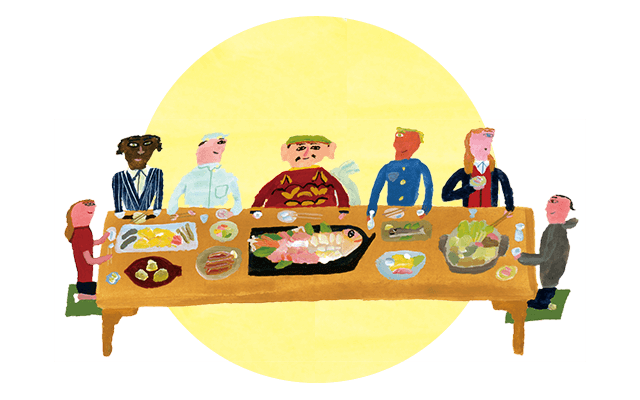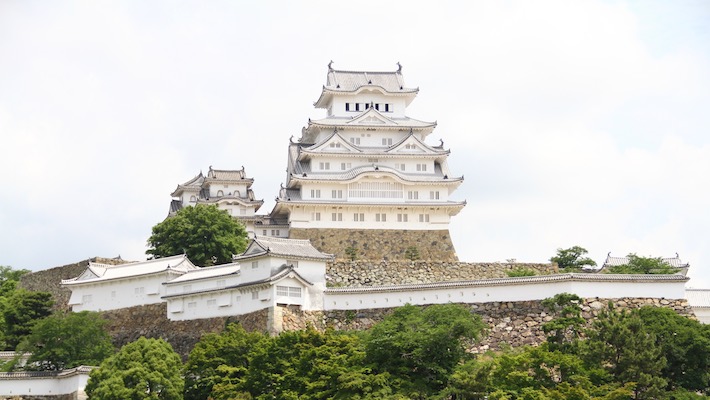
Harima Archives
2022.03.18 Himeji Province, the Land That Daimyo Coveted

Go to Himeji Province to Profit from Tax Revenue
Harima is a fruitful land that produces a wide variety of goods in large amounts due to the richly-varied terrain ranging from mountains, rivers, hills, plains to sea. From the times of soyocho, it was the top province in terms of tax revenue, making those in power yearn for it. From the mid-Heian period, when the ritsuryo system collapsed until the Meiji era, the tax was paid in rice, called nengu, in Japan. Since Harima was in the top class in terms of production alone, it is said that daimyo, or feudal lords, who suffered from fiscal woes during the Edo period all wanted to govern Himeji Province.
Lord Sakai, Who Wished to Relocate Due to Fiscal Difficulties
The most famous daimyo who wanted to govern Himeji Province was Sakai Tadazumi, a lord during the mid-Edo period. The Sakai clan had initially been installed in Maebashi by the Tokugawa clan as it was a key position for protecting the north. They have trusted vassals of the Tokugawa clan and asked to “protect Maebashi forever because it is an important place to protect the north.” However, unfortunately, Maebashi was not a lucrative domain. Crops were often washed away in bends of the meandering Tonegawa River every year, and the clan was often in the red.
The head of the family at the time, Tadazumi, wished to be relocated to the wealthy Himeji Province to raise tax revenue. His wish was granted, and Tadazumi became the first lord of Himeji Province from the Sakai clan. However, an incident occurred in which his chief retainer Kawai Sadatsune, who was firmly against the transfer, murdered those who arranged the transfer. Sadatsune bore a strong grudge because the Shogun Ieyasu gave Maebashi to the Sakai clan and tasked them to protect it forever, so he felt they should not have moved. The appeal of Himeji was so great that for Lord Sakai, it overrode this order.
The Moving Lord Who Also Wished for Himeji
Matsudairi Naonori, a daimyo during the early Edo period, relocated domains seven times and was nicknamed the “moving daimyo” and even had a movie made about him. He was another daimyo who wanted to govern Himeji Province. During his lifetime, he became lord of Himeji Castle twice. He was just five years old and deemed too young to rule, and was transferred the first time. Upon reaching adulthood, he became lord of Himeji Province once again. Still, he was criticized for handling a relative’s family dispute and had his lands reduced, and he was transferred to Hita Domain in Bungo. Naonori had huge debts due to his repeated moves. That is probably why he strongly wished to govern the wealthy Himeji Domain.
A Symbol of Wealth, Himeji Castle
Himeji Castle stands proudly in the center of Himeji City. Because of its resemblance to the graceful white egret (“shirasagi” in Japanese) with its wings spread out, it is also known as Shirasagi Castle. It is currently designated as a national treasure and a World Heritage Site. This, of course, is deeply linked to tax revenue. The castle’s construction started during the Nanboku-cho period (1336–1392). It was expanded to the sizable castle complex it is today during Ikeda Terumasa, who became the lord of the castle following the Battle of Sekigahara. To cover the costs of construction, the farmers were faced with a tax increase of about 20% at the time. When the consumption tax was raised by 2% in 2019, there were many opposing voices, but a 20% raise is ten times that. Even so, the farmers did not revolt, and a magnificent castle was built. This indicates that the farmers had sufficient reserves.



